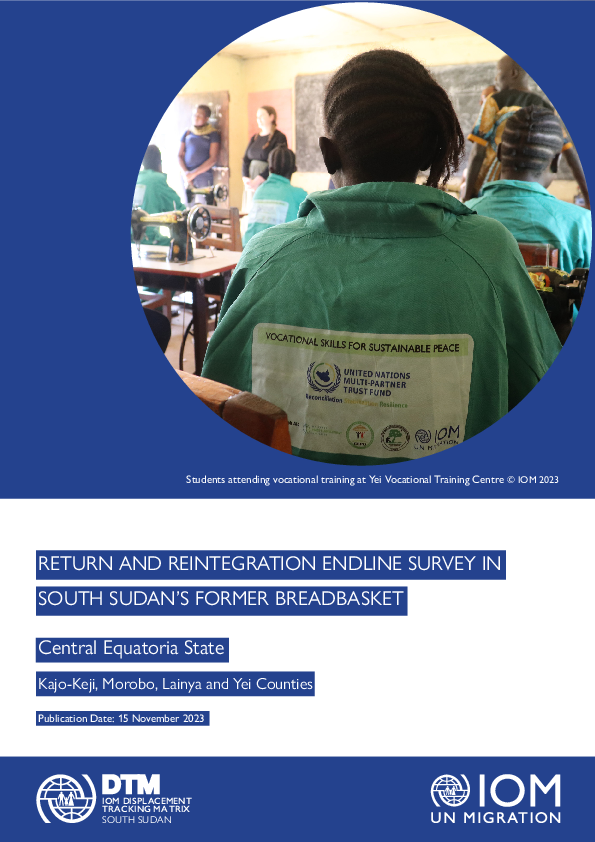-
Countries
-
Data and Analysis
-
Special Focus
-
Crisis Responses
South Sudan — Return and Reintegration Endline Survey in South Sudan’s Former Breadbasket

Contact
dtmburundi@iom.int
Language
English
Location
South Sudan
Period Covered
Aug 11 2023
Aug 28 2023
Activity
- Survey
- Return Intention
To gain comprehensive insights into the dimensions of return and reintegration, the International Organization for Migration’s (IOM) Displacement Tracking Matrix (DTM) unit executed a targeted study within Southern Central Equatoria State, as part of the Reconciliation, Stabilization, and Resilience Trust Fund (RSRTF) project in August 2023. This phase of the study involves a meticulous difference analysis between the baseline and endline, designed to illuminate the shifts in the region’s circumstances and provide clarity regarding its current trajectory. By drawing comparisons between these surveys, the intention is to furnish stakeholders with actionable insights that can inform future humanitarian and developmental strategies, ensuring their relevance and effectiveness.
The findings obtained through the survey serve the purpose of establishing an endline and pinpointing the gaps and barriers that impact reintegration and stabilization efforts in Southern Central Equatoria State. This report presents a comprehensive analysis based on data that is representative of the county level. It is crucial to interpret the findings with an understanding of this scope. While the collected data provides valuable insights into the conditions and trends within the counties, its representation of smaller, sub-county divisions is more indicative in nature. In essence, while the report captures broader county-level trends, it may not precisely detail every nuance or variation present at sub-county levels.
Return and Reintegration Index
The Return and Reintegration Index combines data (the numerical version of the data) from eight indicators (8 key areas: housing, livelihoods, WASH, health, education, social cohesion, community stability, and protection) into a single number that provides an indication of the favourability of conditions (Stability Index) to the return and reintegration of displaced people. The calculation of the index was done at the household level.
The index score ranges from 0 to 10 where the higher the index the more favourable the conditions are for the return and reintegration of IDPs and refugees.
The calculation of the index was done at the household level and the results were aggregated at all administrative levels and by population type.
The average (mean) index score is 5.56 out of 10 with both the mean and median values indicating that the central tendency of the data is between 5 and 6.
Kajo-Keji and Morobo emerge as the two best-performing counties, as determined by the average (mean) index scores. While ‘Returnees’ and ‘IDPs’ report the highest mean index scores at 5.79 and 5.72 respectively, it’s important to note that the deviation among the different population groups is minimal, with all scores ranging between 5.3 and 5.7. This indicates a relatively uniform experience across the board, suggesting that while some groups are slightly better off, no single group is significantly outperforming or lagging the others in terms of the index score. Returnees and IDPs appear to experience relatively favorable conditions for return and reintegration compared to those who have been relocated.
